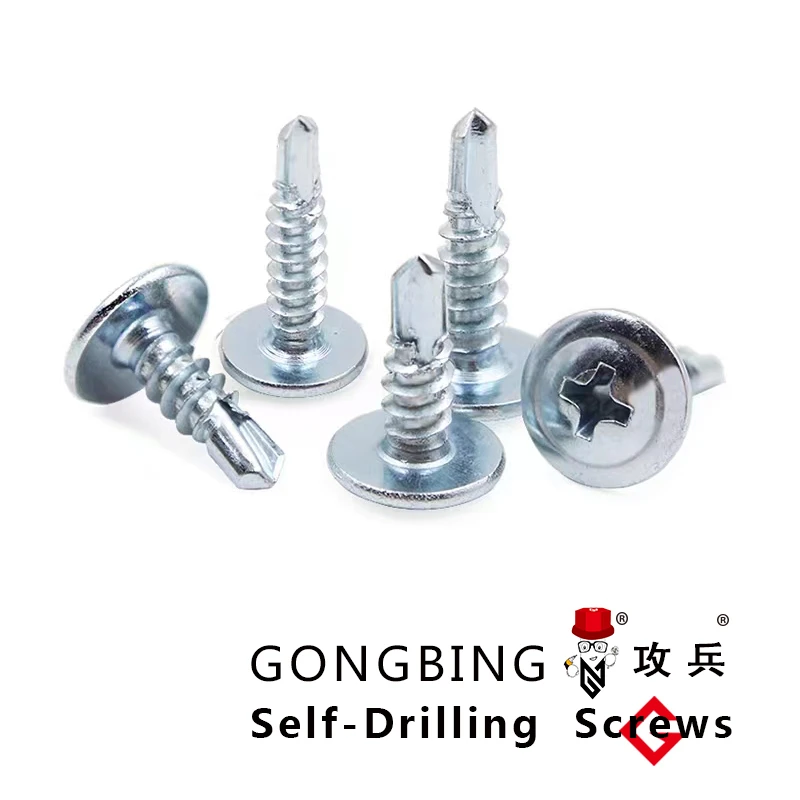Countersunk Screws for Chipboard Applications and Their Benefits in Construction
Understanding Countersunk Chipboard Screws A Comprehensive Guide
When it comes to woodworking, ensuring the right fasteners are used is crucial for the structural integrity and aesthetic appeal of any project. Among various types of screws available, countersunk chipboard screws have gained popularity, especially in cabinetry and furniture assembly. This article will delve into what countersunk chipboard screws are, their advantages, applications, and the best practices for using them.
What Are Countersunk Chipboard Screws?
Countersunk chipboard screws are specifically designed for fastening chipboard materials, which are widely used in the furniture industry due to their lightweight and cost-effective nature. These screws feature a flat head that allows them to sit flush with the material surface when driven in correctly. The term countersunk refers to the design of the head, which creates a conical recess in the material, ensuring a smooth finish that not only enhances the appearance but also prevents snagging.
Advantages of Countersunk Chipboard Screws
1. Aesthetic Appeal One of the primary benefits of using countersunk screws is their ability to deliver a clean and professional look. When the screw head is recessed, it reduces the risk of visible fasteners, helping maintain the seamless look of the furniture.
2. Enhanced Stability The design of the countersunk head allows for deeper engagement with the material, providing better holding power. This is particularly beneficial for chipboard, which can be softer and less resilient than hardwood materials.
3. Reduced Risk of Splitting Countersunk screws reduce the risk of splitting the chipboard during installation. The gradual tapering of the screw head allows the material to compress rather than crack, leading to a more durable joint.
4. Versatility These screws are highly versatile and can be used in a variety of applications, from assembling flat-pack furniture to constructing intricate cabinetry. Their ability to blend with the material also makes them suitable for projects where appearance is a key concern.
Applications of Countersunk Chipboard Screws
Countersunk chipboard screws are predominantly used in the furniture industry, but their applications extend beyond that. Some common uses include
countersunk chipboard screws

- Flat-Pack Furniture Many ready-to-assemble furniture products utilize these screws for fast and effective assembly
.- Cabinetry In kitchen and bathroom cabinets, countersunk screws provide a secure and visually appealing installation.
- Flooring and Decking Certain flooring and decking projects may also incorporate these screws to ensure a sleek finish.
- Diy Projects Hobbyists and DIY enthusiasts appreciate the ease of use and clean appearance that countersunk screws provide.
Best Practices for Using Countersunk Chipboard Screws
To achieve the best results when working with countersunk chipboard screws, consider the following tips
- Pre-Drill Always pre-drill pilot holes to prevent splitting the chipboard. This is especially important for thicker materials.
- Use the Right Screw Size Select a screw that matches the thickness of the chipboard to ensure optimal holding power without compromising integrity.
- Adjust Torque Settings When using power tools, adjust the torque settings to avoid overdriving the screws, which could damage the material.
- Finish with Care After installation, if the screws are visible, consider using wood fillers or plugs that match the chipboard finish for a seamless look.
In conclusion, countersunk chipboard screws are indispensable tools in woodworking, particularly in the assembly of furniture and cabinetry. Their unique design not only enhances aesthetics but also improves stability and longevity of the projects. By understanding their use and following best practices, woodworkers—from professionals to DIY enthusiasts—can achieve exceptional results in their endeavors.
-
Weatherproof Plastic Expansion Anchors for OutdoorNewsJun.06,2025
-
Sustainability in the Supply Chain: Eco-Friendly TEK Screws ProductionNewsJun.06,2025
-
Load-Bearing Capacity of External Insulation FixingsNewsJun.06,2025
-
Double Head Bolts: Enhancing Efficiency in Industrial MachineryNewsJun.06,2025
-
Corrosion Resistance in Chipboard Screws: Coatings for Wholesale DurabilityNewsJun.06,2025
-
Butterfly Toggle Bolts : Enhancing Structural ResilienceNewsJun.06,2025
